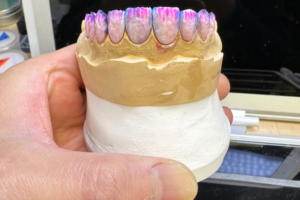 Zoloft Withdrawal: Managing Symptoms Safely
Zoloft Withdrawal: Managing Symptoms Safely
Recognizing Withdrawal Signals: What to Expect
I remember the first days after my dose dropped: a sudden fizz of lightheadedness, and strange electric jolts people call 'brain zaps.' These sensory shocks, along with nausea, headaches, dreams, are very common early signs, and knowing they are expected can ease the fear.
Mood swings, irritability, and a return of low mood may follow, with anxiety that feels sharper than before. Sleep often fragments — early wakening or insomnia — some experience flu-like aches, sweating, or digestive upset. Onset occurs within days to weeks, varying by dose and metabolism; occassionally symptoms are delayed.
Track symptoms, timing, and triggers, and share them with your prescriber so a safer taper can be planned; abrupt stops raise risk. If symptoms are severe, worsening, or include suicidal thoughts, seek immediate help. Small, steady steps, social support, and patient self-care make a big difference.
Safe Tapering Strategies: Gradual Dose Reduction Guide

When I decided to lower my zoloft dose, I learned that a gradual plan matters more than speed. Start by consulting your prescriber and agree on a realistic schedule—often reducing by 10–25% every 2–4 weeks. This lets your brain adapt and gives clear checkpoints to assess symptoms.
Keep a daily log of mood, sleep, and side effects; small patterns become important signals. For some people, micro-tapering with liquid formulations or pill-splitting helps smooth transitions. Never double-dose if you miss a pill; instead contact your clinician for guidance.
Adjustments may be needed if withdrawal symptoms intensify—slowing the taper or pausing can prevent relapse. Support from therapists, friends, and structured routines makes a big difference. Be patient with yourself: progress is rarely linear and is to be celebrated as you Acheive stability. Keep your prescriber updated and ask about contingency plans regularly.
Managing Physical Symptoms with Practical Home Remedies
After stopping zoloft, rituals can ease dizziness and nausea: sip ginger tea, eat plain crackers, rest in dim room, and try slow breathing. Keep hydrated and use a cool compress for headaches. These Teh gentle steps feel grounding and help you notice subtle improvements over days.
Warm baths with Epsom salts, gentle stretching, and short walks can loosen muscle tension and lift energy. Maintain regular meals, prioritize sleep hygiene, and limit caffeine late in the day. Track symptoms in a simple journal and share patterns with your prescriber during follow-up.
Coping with Mood Changes and Sleep Disruption

I remember nights when small surprises blurred into heavy worry; tracking emotions helped me spot patterns and feel Occassionally alone. Use a simple mood journal, share notes with your clinician, and practise grounding breaths during surges. If you stopped zoloft, expect shifts and be patient.
Sleep often fragments; rebuild routines by dimming lights, limiting screens an hour before bed, and keeping consistent wake times. Short naps and stretching can help, but avoid late caffeine. If insomnia or worsening mood persists, or you experience thoughts of self-harm, seek urgent medical support
When to Seek Immediate Professional Medical Advice
A sudden spike in symptoms left me breathless one night — heart racing, dizziness and confusion — and taught me to trust instincts and call for help. With zoloft withdrawal, warning signs like fainting, severe suicidal thoughts, high fever, chest pain or uncontrollable vomiting deserve immediate action. Keep your prescriber's number handy and describe symptom onset, severity, and any other meds.
Do not wait if symptoms escalate quickly or fail to improve after a tapered reduction — emergency rooms can asses life‑threatening signs and psychiatrists can adjust plans. Family members should advocate if someone seems disoriented or speaks of self-harm. Err on the side of caution; prompt evaluation can prevent complications and help you recieve the right support.
Building Resilience: Long-term Strategies to Stay Stable
Years after stopping sertraline, I learned resilience is a practice, not an endpoint. Small daily routines steadied mood and made progress visible.
Track sleep, activity, and meds to spot patterns; this data helps guide gradual adjustments and supports communication with your clinician.
Lean on social supports and brief therapy for coping skills; practise grounding and paced breathing when dizzy or anxious feelings occassionally occur.
Regular medical reviews, gentle exercise, balanced nutrition, and realistic goal-setting create a safety net; be patient with setbacks and celebrate small victories over months and years.
FDA: Sertraline (Zoloft) information NHS: Antidepressants — withdrawal effects












